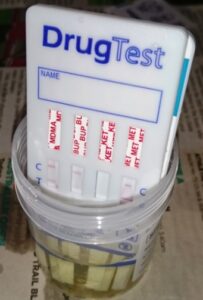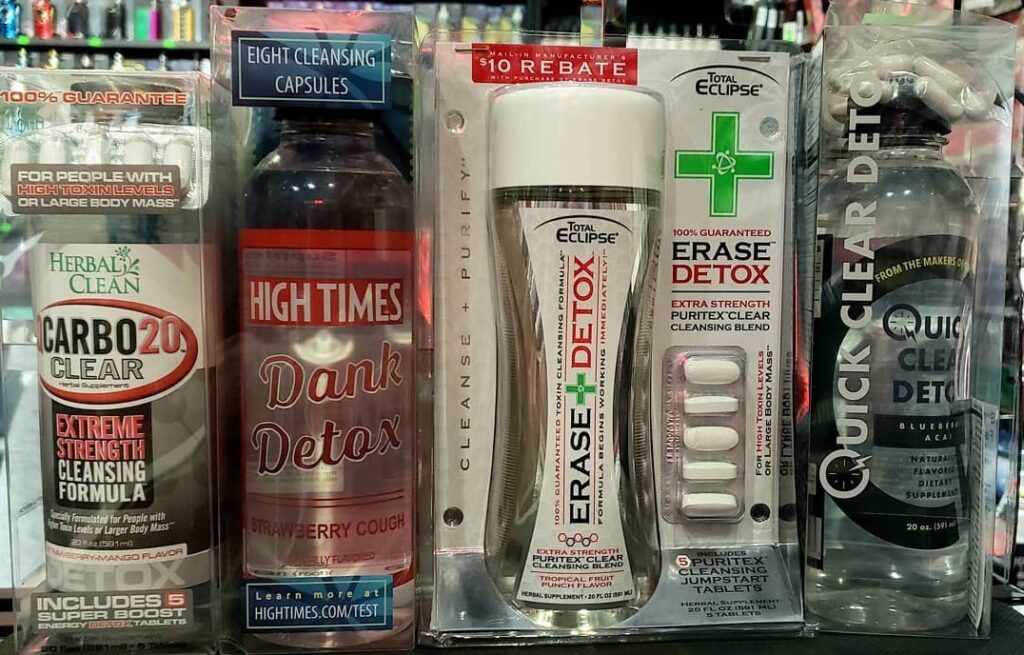Cannabis, also known as marijuana, is a widely-used substance that can produce various effects on the mind and body. Many people are curious about how long the effects of cannabis last and what factors can influence the duration of the high. In this comprehensive guide, we will explore the timeline of a cannabis high, the factors that can affect its duration, and some tips for managing and reducing the effects. Whether you are a seasoned cannabis user or new to the experience, understanding the duration of the high can help you make informed decisions about your cannabis consumption.
Table of Contents
The Timeline of a Cannabis High
Factors Affecting the Duration of a Cannabis High
Tips for Managing and Reducing the Effects of a Cannabis High
How Long Does Weed Stay in Your System?
Conclusion
The Timeline of a Cannabis High
The duration of a cannabis high can vary depending on several factors, including the amount consumed, the method of consumption, the THC content, body weight, metabolism, and tolerance level. THC, or delta-9 tetrahydrocannabinol, is the primary psychoactive compound in cannabis responsible for the euphoric effects, often referred to as getting “high.”
Smoking or Vaping
When cannabis is smoked or vaporized, the effects can be felt relatively quickly. The onset of the high typically occurs within 2 to 10 minutes after inhalation, as THC enters the bloodstream through the lungs. Smoking or vaping cannabis can provide an immediate and intense high, which peaks around 10 minutes after consumption. The effects usually last for 1 to 3 hours, although they can linger for up to 8 hours, depending on factors such as dose and potency.
Eating (Edibles)
Consuming cannabis through edibles, such as brownies or cookies, takes longer for the effects to kick in. The digestive system metabolizes the THC, which can take anywhere from 30 minutes to 2 hours for the onset of the high. Edibles often provide a more prolonged and potent high compared to smoking or vaping. The effects of edibles usually peak around 2 hours after consumption and can last up to 24 hours, making them a popular choice for medical cannabis users.
Dabbing
Dabbing involves inhaling a concentrated form of marijuana through a special pipe. This method delivers a high THC content, resulting in an almost instant and intense high. The effects of dabbing usually last for 1 to 3 hours, but if a high THC concentrate is used, the effects can be felt for an entire day.
It’s important to note that cannabis affects everyone differently, and individual experiences may vary. Factors such as body chemistry and personal tolerance can influence how long the high lasts and the intensity of the effects. For new cannabis users, it is recommended to start with a low dose and go slow to avoid any overwhelming or adverse reactions.
Factors Affecting How Long a Cannabis High Lasts
Several factors can influence how long the effects of cannabis last. Understanding these factors can help you better manage and control the duration of your high.
Dosage and Potency
The amount of cannabis consumed and the THC content play a significant role in the duration and intensity of the high. Higher doses and more potent strains with increased THC levels tend to produce longer-lasting effects. If you are looking for a longer-lasting high, consider using edibles or opting for strains with higher THC concentrations. However, keep in mind that higher doses may also result in more intense effects, which may be overwhelming for inexperienced users.
Method of Consumption
The method of consumption also affects the onset and duration of the high. Smoking or vaping cannabis delivers THC directly into the bloodstream, resulting in faster effects that typically last for a shorter duration. On the other hand, consuming edibles requires the THC to be metabolized by the digestive system, leading to a delayed onset but a more prolonged high. Dabbing, with its highly concentrated form of cannabis, provides an almost immediate and intense high.
Body Weight and Metabolism
Body weight and metabolism can influence how long the effects of cannabis last. THC is stored in fat cells, and individuals with higher body fat may experience a longer duration of the high compared to those with lower body fat. Additionally, individuals with faster metabolisms may process and eliminate THC more quickly, resulting in shorter-lasting effects.
Tolerance Level
Individual tolerance to cannabis can also impact the duration of the high. Regular cannabis users may develop a tolerance over time, requiring higher doses to achieve the same effects. Tolerance can lead to shorter-lasting highs as the body becomes more efficient at metabolizing THC. Conversely, individuals with lower tolerance levels may experience longer and more intense highs from smaller doses.
Other Factors
Several other factors can affect the duration of a cannabis high. These include whether you have eaten before consuming cannabis, as an empty stomach may result in faster onset and shorter duration. Additionally, individual genetics, overall health, and concurrent use of other substances can influence how long the effects of cannabis last.
Tips for Managing and Reducing the Effects of a Cannabis High
While the duration of a cannabis high is influenced by various factors, there are some strategies you can try to manage and reduce the effects if needed. It’s important to note that these tips are designed to minimize the effects, not eliminate them entirely. You may still experience lingering effects, and it’s crucial to prioritize safety and avoid activities such as driving while under the influence of cannabis.
- Take a Nap: If feeling anxious or paranoid from the high, a nap can relax you, allowing your body time to process and eliminate cannabis. Wake up feeling refreshed and alert.
- Try Some Black Pepper: Evidence suggests sniffing or chewing on black pepper, containing caryophyllene, enhances THC’s sedative effects, calming you down.
- Eat Some Pine Nuts: Pine nuts, with pinene, offer a calming effect and mental clarity. Note: Avoid if allergic to tree nuts.
- Consider CBD: CBD, a cannabinoid in cannabis, calms and counters THC’s psychoactive effects. Products with higher CBD content or CBD oil can help if overwhelmed by the high.
- Have a Meal: Eating a regular meal can reduce THC effects, providing a natural way to manage the high.
- Use Lemon Peel: Compounds in lemon peel, especially when steeped in hot water, counteract some psychoactive effects of THC, offering a calming effect.
How Long Does Cannabis Stay in Your System?
Cannabis, also known as marijuana, contains THC (delta-9 tetrahydrocannabinol), the psychoactive compound responsible for the euphoric effects experienced when using the drug. One of the most common questions among cannabis users, especially those subject to drug testing, is how long THC stays in the system. The duration varies significantly depending on several factors, including the type of drug test administered, individual metabolism, frequency of use, and the potency of the cannabis product consumed.
Detection Windows for Different Drug Tests:
| Drug Test Type | Detection Window for THC Metabolites |
|---|---|
| Urine Tests | Up to 3 days for infrequent users – Several weeks to months for regular and heavy users |
| Blood Tests | 1-2 days for occasional users – Around 7 days for regular users |
| Saliva Tests | Up to 72 hours |
| Hair Tests | Up to 90 days |
Factors Influencing THC Detection Duration:
- Frequency of Use: Regular cannabis users tend to accumulate THC metabolites in their system, leading to longer detection windows. Infrequent users, on the other hand, may clear THC from their system more rapidly.
- Metabolism and Body Fat: THC is fat-soluble, meaning it is stored in the body’s fat cells. Individuals with higher body fat percentages can retain THC metabolites for a longer time, as the body takes longer to metabolize and eliminate them.
- Method of Consumption: Different methods of cannabis consumption influence how quickly THC enters and exits the body. Smoking or vaping leads to faster metabolization compared to edibles, which are processed through the digestive system, leading to a delayed onset and longer detection window.
- Potency of the Cannabis Product: Higher potency cannabis products contain more THC, which can lead to a higher concentration of THC metabolites in the body, extending the detection window.
Tips for Speeding Up THC Elimination:
| Methods for Speeding Up THC Elimination | Description |
|---|---|
| Hydration | Drinking water can aid in flushing out toxins. Note: excessive water intake shortly before a drug test might dilute urine. |
| Exercise | Regular physical activity, especially cardiovascular exercises, can help burn fat and promote metabolism, aiding in THC metabolite elimination. |
| Diet | A fiber-rich diet supports natural detoxification. Some individuals use detox drinks or kits, but their effectiveness is debated. |
| Sauna and Sweating | Sauna sessions and activities inducing sweating can help eliminate toxins. Caution: excessive sweating can lead to dehydration. |
| Detox Drinks | Specialized drinks claim to assist in detoxification. Effectiveness varies and is debated among experts. |
| Time | Abstinence allows the body to naturally metabolize and eliminate THC metabolites over time. |
It’s crucial to note that these methods might not guarantee a negative drug test result. The best way to pass a drug test is through complete abstinence from cannabis for a sufficient period. Understanding the factors influencing THC detection duration can empower individuals to make informed decisions and take necessary precautions, especially in situations where drug testing is a concern.
Health and Safety Notice:
This article is intended for informational purposes only and does not constitute medical advice. Cannabis use may have different effects on individuals, especially those with underlying medical conditions or who are taking medications. It is crucial for individuals with medical conditions to consult their healthcare provider before using cannabis or attempting any of the strategies mentioned in this article. Additionally, be aware of the legal status of cannabis in your region, as laws vary widely. Always prioritize your health and safety, and seek guidance from qualified healthcare professionals regarding your specific medical situation.
Conclusion
The duration of a cannabis high can vary depending on several factors, including the method of consumption, dosage, potency, body weight, metabolism, and tolerance level. Smoking or vaping cannabis provides a quicker onset but a shorter duration, while consuming edibles leads to a delayed onset and a longer-lasting high. Factors such as body weight, metabolism, and tolerance can also influence how long the effects last.
If you find yourself wanting to reduce the effects of a cannabis high, strategies such as taking a nap, trying black pepper or pine nuts, using CBD, or consuming lemon peel may help. However, it’s important to remember that these tips are not foolproof and may only minimize the effects rather than eliminate them entirely. It’s always advisable to start with a low dose and go slow, especially if you are new to cannabis.
Understanding the duration of a cannabis high and how to manage its effects can empower you to make informed decisions about your cannabis consumption. As with any substance, it’s essential to prioritize responsible use, prioritize safety, and be aware of the potential risks and legalities associated with cannabis in your region.








